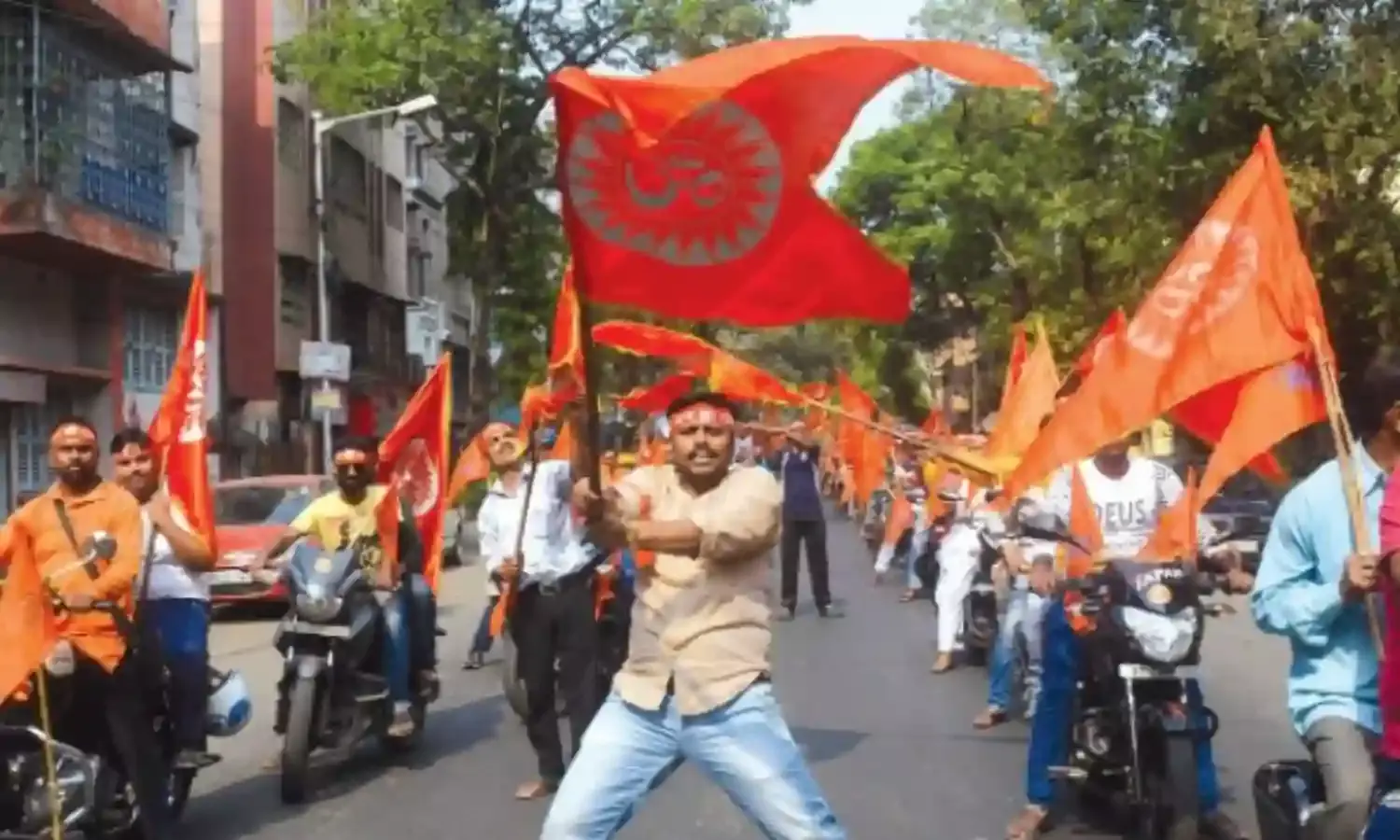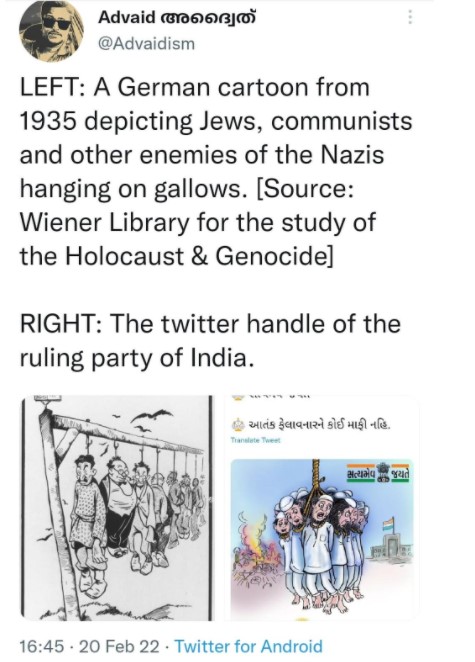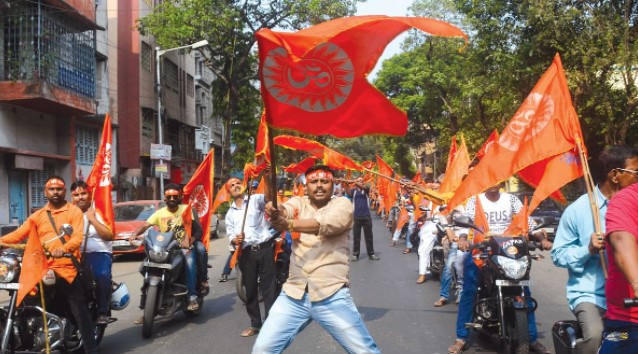When Gujarat Showed the Future of India
‘The communal divide has simply widened in all these years’

It has been two decades since Gujarat witnessed the harrowing incident of the torching of a coach of the Sabarmati Express at Godhra in which 59 Hindu Kar Sevaks returning from Ayodhya perished and a subsequent communal pogrom in which Muslims were largely targeted.
What happened in Gujarat, a statebefore and after the violence of 2002 has since been echoed across India. The spreading of divisiveness and hate is the Gujarat Model, of targeting vulnerable minorities and marginalized communities for political gains and to establish majority-religion hegemony that is now being witnessed in several states.
Where does Gujarat stand as it marks two decades of that communalised madness, as questions continue to rise on justice delivery and the lacunae in the criminal justice system?
One thing that stands out clearly for anyone who was witness to those times is that the communal divide stands cemented. This is apparent in cities like Ahmedabad that had seen the most of the violence in 2002, where ghettoisation has become the norm and localities have become homogenous on religious as well as caste lines.
A case in point remains Juhapura, often described as one of the biggest Muslim ghettoes in Asia. The locality has seen a phenomenal influx of Muslims looking for security since 2002 riots. Even those who had ventured out looking for cosmopolitan neigbourhoods prior to 2002 were compelled to return.
“The communal divide has simply widened in all these years. One thing that continues to perplex people like me is that while the education among the Muslims has increased all this while, so has the fear. This should not have been the case,” pointed out Mukhtar Ahmed who had contributed in efforts to get justice for the victims of riots and to bring the communities together.
“But today we are compelled to being helpless witnesses to the continuing religious polarization. Institutions like the government and the administrations that can bridge the divide are not doing it. As the city expands and new residential projects come up there is no Muslim society to be seen anywhere. Hence places like Juhapura continue to get more crowded,” he added.
The town Godhra continues to wear the badge of stigma of what happened there. Residents say it has become a pariah with politicians having abandoned it. They complain there are no employment avenues and no special development projects.
“The people have become increasingly conservative. Attendance in temples and mosques continues to rise as humanity takes a dip,” observed Saeed Umarji whose father Maulana Hussain Umarji was arrested in the Godhra train burning case only to be acquitted by the trial court. He died a bitter man two years after his acquittal.
“The criminal justice system needs a major amendment. Innocents, no matter what their faith is, continue to suffer on account of frivolous charges leveled against them for ulterior motives,” he underlined.
Umarji’s observation needs to be seen in the light of the delay in ensuring justice to the victims even of massacres in broad daylight like Naroda Patia, Naroda Gam, Gulberg Society, Deepda Darwaza and others that still hang fire in various courts even after 20 years. A lot of the survivors and witnesses have perished in this time.
At the same time questions are raised about the convicted perpetrators of violence getting released on one pretext or the other, or the accused being acquitted with the state refusing to challenge the acquittals.
The communal narrative that revolves around the criminal justice system is all the more disturbing. Take for example the recent episode of the Gujarat unit of the Bharatiya Janata Party tweeting a Nazi-inspired caricature following a trial court verdict awarding death to 38 of the 49 people convicted for the July 2008 serial blasts in Ahmedabad, all of them Muslims.
The caricature showed several bearded and skull-capped people being hanged together from a rope which reminds one of a similar episode in Nazi Germany. What was more disturbing was the display of a tricolour and the slogan ‘Satyameva Jayate’ in the background with a sketch of the blast on the side.
This had followed a front page headline of a prominent vernacular daily appealing to the judge on behalf of “the people” to hang the guilty. The headline was printed in a font normally used for reporting extraordinary events.

With his keen eye on developments in the state in the last two decades, sociologist Gaurang Jani has some interesting observations and interpretations to make.
“Those born after 2002 do not know what Gujarat was all about at that time. For them, irrespective of their faith, society is all about religion, sect and caste. Unfortunately the teachers have contributed largely to the process of saffronization and today we have reached a point where even university buildings bear the saffron colour. With college polls having been done away with the space for politicization has vanished,” he explained.
Jani further said that with Hindutva well embedded in the system, people continue to be fed with the narrative of their security, with religion pushing all other issues like lack of full employment to the margins. This has continued with the symbolic echoing of lies like Love Jihad and the more recent ruckus over the sale of meat by restaurants and roadside eateries.
“While there has been an attempt to assimilate everything under the umbrella of religion, caste remains the ultimate fact of Hindu society and hence casteism has been on the ascent all this while. With theories like that of KHAM (Kshatriya, Harijan, Adivasi and Muslim) combination once propagated by the Congress becoming a thing of the past, almost every caste is having an identity crisis. Alongside there remain untouchability and atrocities against women as there have been no social reforms. What is being talked about is Hindu religious reform while no one understands what it means,” he told this reporter.
Jani is very critical of the Congress for not facing the communal onslaught. “There has been no ideological counter to the propagation of communal hate. There has been no mobilization of the new generation though its student and youth wings. They don’t even talk about Jawaharlal Nehru or the Constitution,” he said, lamenting that literature, culture, intellectuals and academics have all fallen prey to the narrative of religion.
Coming to the replication of the Gujarat Model in various states, it needs to be pointed out that the hate playing out in society was witnessed and reported regularly during and after 2002 riots but the ‘all knowing’ politicians and activists sitting outside Gujarat chose to ignore them.
All the stories of Love Jihad, Muslims celebrating India’s cricket loss against Pakistan or aiming to increase their population by marrying four times etc. were used to the hilt during those years in Gujarat and are now finding space across states.
Instances of Muslims not being given accommodation on rent and even not being sold flats in societies in Hindu dominated areas were there for all to see. These instances are now being reported from other states as well.
This reporter had witnessed and reported on billboards advertising houses and flats for sale with the rider “Only for Hindu brothers”. Then there were boards outside localities saying “Hindu brothers are welcome in xyz locality of Karnavati in Hindusthan.” The right wing elements call the city Karnavati instead of Ahmedabad which to them is ‘Muslim sounding’. Uttar Pradesh Chief Minister Yogi Adityanath went on his name-changing spree of cities like Allahabad and Mughalsarai Junction much later.
The same was the case with frequent calls for economic boycott of the minorities.
Trolling on social media too came much later. Journalists on the ground were heckled and pestered by mobs subscribing to the right wing ideology outside courts, political party offices and other venues from 2002 onwards. Incidentally, the embedded media which was having teething troubles in those times has grown into a monster by the present day.
The symptoms were there for all to see. Only now it has become a full blown malady.
This year Gujarat is heading for yet another assembly poll. The fear being expressed by the people is that narratives around hate and communal divide are only going to be magnified so that real issues like the mishandling of Covid-19 and full employment do not get centre stage.




